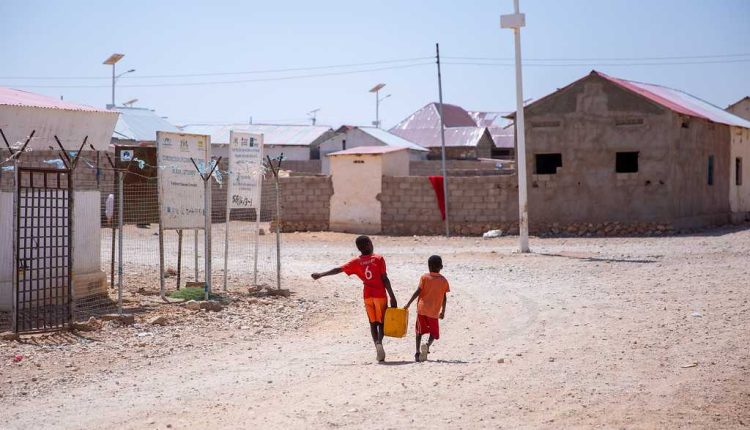Daily Noon Briefing Highlights: Somalia, Ethiopia, Ukraine
Somalia now faces a risk of famine (IPC Phase 5) in six areas through June 2022 if the April to June Gu season rains fails as forecast; food prices continue to rise, and humanitarian assistance is not scaled up to reach the most vulnerable populations.
As of 7 April, the 2022 Humanitarian Response Plan, requiring almost $1.5 billion to assist 5.5 million of most vulnerable Somalis, remained significantly underfunded at 4.4 per cent.
Drought is worsening across the country with most parts of the country experiencing moderate to extreme drought. An estimated 4.9 million people across the country have been affected, including over 719,000 internally displaced as of March 2022.
Acute food insecurity has increased significantly since the beginning of 2022. The latest Integrated Food Security Phase Classification (IPC) projections indicate that more than 6 million people are likely to face crisis or worse food insecurity (IPC Phase 3 or higher) from April through June 2022. Livestock deaths and disease outbreaks are widespread; already, up to 80 per cent of the water sources in the country are drying up and the water levels of the Shabelle and Juba Rivers are below historic minimum levels.
An estimated 3.5 million people lack sufficient access to water. Over 1.4 million children under the age of five years are expected to be acutely malnourished through 2022, including nearly 330,000 severely malnourished. The figures are likely to increase as the nutrition situation deteriorates further.
Moreover, continued insecurity/conflict and unresolved political tensions continue to disrupt livelihoods, market access and exacerbate population displacement. Most of the main settlements for the internally displaced people (IDPs) across Somalia are classified in food security emergency phase (IPC Phase 4) through June 2022.
Humanitarian partners, authorities and local communities have prioritized responses, re-programmed activities and scaled up assistance to meet the increased needs. In January and February, 186 humanitarian partners reached almost 2 million people with life-saving assistance and protection services. Further scaling up of humanitarian assistance is required to prevent extreme food security and malnutrition, including the risk of famine.
This is in the context of one of the most severe La Niña-induced droughts in recent memory in the Horn of Africa following three back-to-back poor rainy seasons. This drought risks becoming one of the worst climate-induced emergencies in recent history in the Horn of Africa. The March to May rains have been below average to date and this is forecasted to continue. If this season fails, it would result in an unprecedented (in the last 40 years) sequence of four below-normal rainfall seasons and major increases in humanitarian needs would be expected.
Ethiopia
The UN and partners have been unable to move any further aid supplies into Tigray via road since the convoy of 20 trucks with food and nutrition supplies and one fuel tanker that arrived between 1 and 2 April.
This was the first time that our supplies entered Tigray by road since mid-December, and the first time in eight months that humanitarian fuel supplies have been moved through the Semera—Mekelle corridor.
Humanitarian organizations in Tigray face growing challenges in reaching people in need due to shortages of essential supplies, as well as continuing suspension of basic essential services, including banking, electricity and communications.
Out of a target of 5.2 million people who should be receiving food every six weeks, the UN and partners have reached some 1.2 million people with food, almost six months after the current round of food distributions in Tigray began.
Some 73,000 people received food assistance this week, but half received only pulses, and thousands received only cooking oil. No school feeding has been possible in Tigray over the past week due to a lack of food stocks.

